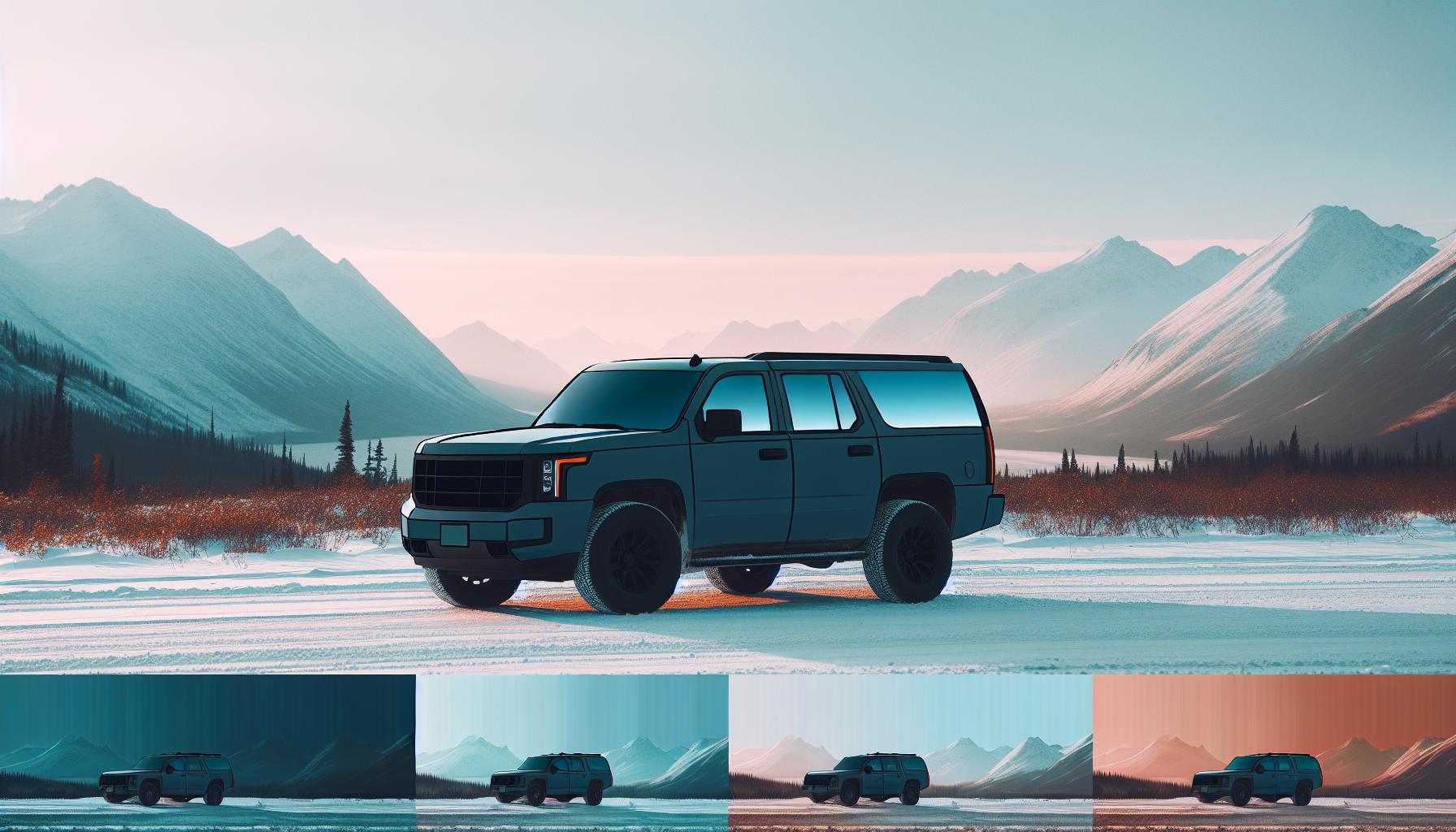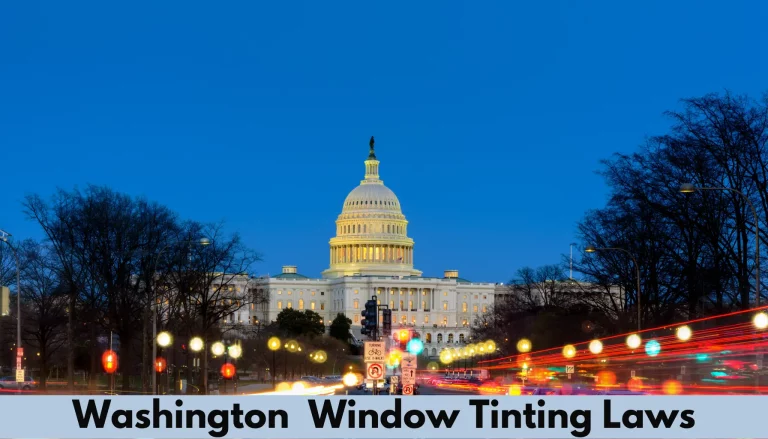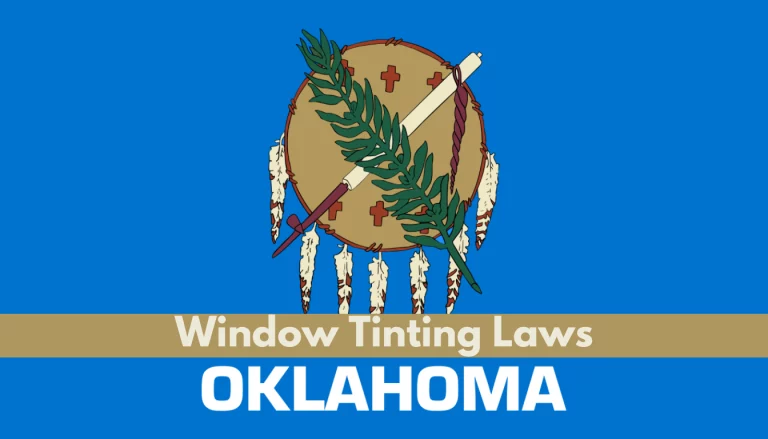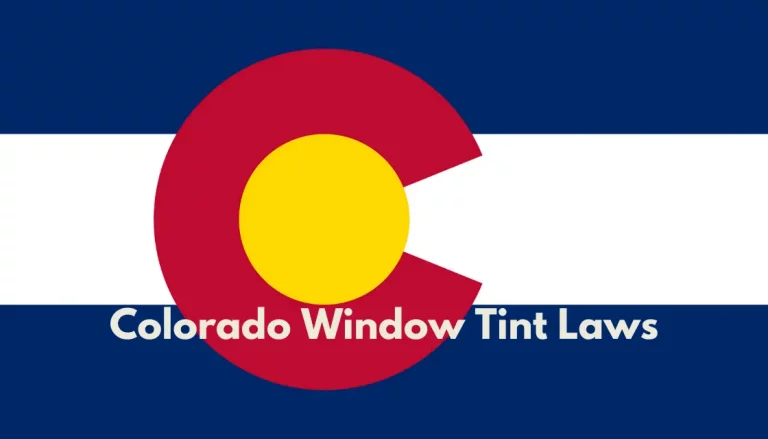Alaska Window Tint Laws: Essential VLT Guide
When it comes to customizing your ride, window tinting is a popular choice for style and privacy. But before you dive in, it’s crucial to know Alaska’s specific window tinting laws. I’ve navigated the legal jargon to bring you a clear-cut guide to what’s allowed on the roads up north.
Alaska’s unique climate and latitude present a different set of considerations for window tinting. I’ll help you understand the regulations to ensure your vehicle is not only looking sharp but also compliant with the law. Let’s get into what you need to know before tinting your car windows in The Last Frontier.
Understanding Alaska Window Tinting Laws
When I first explored Alaska’s tinting regulations, I found out that Alaska’s window tint laws were enacted in 1994. These laws are consistent with other state laws but have particulars that are unique to Alaska’s environmental conditions.
The state of Alaska specifies that non-reflective tint is allowed on the top 5 inches of the windshield. For the front side windows, the tint must allow more than 70% light transmission. The laws are in place to ensure driver visibility under the often dim and unique lighting conditions found in Alaska.
For the rear window and the back side windows, any tint darkness can be used. However, if the back window is tinted, the vehicle must have dual-side mirrors. This requirement makes sense as it compensates for the reduced visibility that comes with darker tints. Knowing that one’s vehicle complies with these nuances instills confidence while driving.
Essential Requirements in Alaska
The Alaska window tint law also has several other requirements and exceptions:
- Reflection for window tints: For the front and back side windows, the tint must not be more than 5% reflective.
- Color restrictions: The Alaska tint laws do not permit red, yellow, and amber window tints as they can be confused with official vehicles.
It’s important to note that Alaska also provides medical exemptions for drivers who require less light transference due to medical conditions.
List of key regulations:
- Windshield: Non-reflective tint above the manufacturer’s AS-1 line
- Front Side Windows: Must allow more than 70% light transmission
- Back Side Windows: Any darkness can be used
- Rear Window: Any darkness can be used, providing the vehicle has dual side mirrors
By adhering to these guidelines, drivers in Alaska can customize their vehicles to suit their style and needs without running afoul of the law. As someone who values both personal expression and compliance, I always suggest double-checking with local authorities to ensure that all modifications meet the current legal standards.
Factors to Consider in Alaska’s Unique Climate

Alaska’s climate poses unique challenges for drivers, especially when it comes to window tinting. Extreme temperature variations, limited daylight in winter, and the midnight sun in summer are all factors that impact the decision on how much tint to apply to a vehicle’s windows.
In the winter months, the low angle of the sun can cause significant glare, making driving difficult. A lighter tint can reduce this glare while still permitting maximum visibility. This is vital, as poor visibility can lead to accidents on icy or snow-covered roads.
Conversely, during the summer, Alaskans experience long days where the sun barely sets. UV rays can be intense and potentially harmful to both drivers and the interior of cars. Here, a darker tint might be desirable to protect against UV exposure and to keep the car cooler.
But it’s not just about comfort; the tinting you choose needs to be durable enough to withstand cold temperatures that can cause windows to contract. Look for high-quality films that promise resistance to cracking and peeling in colder climates.
Remember, your tint’s durability and effectiveness rely not only on the material but also on proper installation. It’s critical to choose certified professionals for installation to ensure your tint adheres to both the legal standards and the rigors of Alaska’s unique climate.
Safety should always be the priority when selecting your window tint. Consider the following:
- Reduced visibility during winter darkness
- Glare reduction to prevent squinting and distraction
- Protection from prolonged exposure to summer sunlight
- Durability against Alaska’s extreme temperature fluctuations
Professional installers can guide you through the best options for your vehicle, bearing in mind both Alaska’s laws and the environmental conditions. By taking these nuances into account, you’ll ensure that your vehicle is equipped to handle what the Alaskan wilderness throws at you throughout the year.
Visible Light Transmission (VLT) Requirements
When you’re gearing up to tint your vehicle, knowing the VLT requirements in Alaska is crucial. VLT refers to how much light your window tint allows to pass through your car’s windows. In the Last Frontier, VLT specifications are crafted with precision for driver safety.
Alaska’s legal VLT limit for passenger vehicles differs depending on the window. For instance, the front side windows must allow at least 70% of the light to pass through. This is to ensure that the driver has sufficient visibility, especially during the long winter nights or in heavy snow conditions when light is scarce.
For the rear window and back side windows, the laws are more lenient. These windows can have tints with a lower VLT, allowing for greater privacy and UV protection.
Here’s a quick breakdown of the specific VLT percentages for different windows:
| Window Position | Minimum VLT Percentage |
|---|---|
| Front Side Windows | 70% |
| Back Side Windows | No restriction |
| Rear Window | No restriction |
| Windshield | Non-reflective tint above the AS-1 line |
It’s also worth noting that there are differences between passenger vehicles and multi-purpose vehicles. Multi-purpose vehicles, which include SUVs and vans, have the same restrictions for the front side windows but may have any VLT percentage on the back side windows and rear windows.
Understanding these VLT requirements is paramount before selecting window tint. Not only does it keep you on the right side of the law, but it also ensures optimal driving conditions. As someone who’s been traversing Alaska’s roads for years, I’d recommend always checking your vehicle type against the latest regulations.
Another key point is the allowance of tint variance. Alaska law permits a tolerance of +/- 5% on VLT measurement. This flexibility can be a relief for those worried about minute discrepancies during vehicle inspections.
Before making any window tinting decisions, I advise consulting with a tinting professional who understands Alaska’s specific needs and regulations. They’ll help you choose the right VLT levels for your car, taking into account your preferences and the demands of Alaska’s challenging environments.
Prohibited Window Tinting Practices
When it comes to window tinting in Alaska, it’s crucial to be aware of what’s not allowed to avoid penalties and to ensure your vehicle is road-legal. Despite the leniency with rear windows, Alaska imposes strict regulations against certain types of tints.
- Metallic or Mirrored Tints: These are outright banned. The reflective nature of metallic finishes can cause glare, posing a safety risk to other drivers.
- Tint on Front Windshield: Any tint applied below the manufacturer’s AS-1 line, which typically runs parallel to the top edge of the windshield, is prohibited. This rule is in place so drivers have a clear, unobstructed view.
- Dark Tints Beyond Legal Limits: Excessively dark tints that fall below the minimum required VLT percentage are not permitted. It’s imperative to adhere to the 70% VLT rule for front-side windows.
Failure to comply with these regulations may result in fines and the requirement to remove the non-compliant tint before the vehicle can be driven legally again. It’s worth noting that these laws are subject to change, so it’s essential for vehicle owners to stay updated.
To navigate Alaska’s window tinting laws, always choose a reputable and knowledgeable installer. They’ll help you select a tint that’s legal and best suits the unique conditions of Alaska’s climates, such as the high level of sunlight exposure during summer months known as the midnight sun.
Exceptions to the Window Tinting Regulations

While Alaska’s window tinting laws are quite specific, there are circumstances where exceptions apply. For instance, certain medical conditions warrant exemptions from the standard VLT requirements.
Patients suffering from conditions such as lupus, photosensitivity, or other disorders exacerbated by sunlight exposure may be authorized to have darker tints than the law typically allows.
To apply for a medical exemption, you’ll need a signed statement from a licensed physician or optometrist confirming the diagnosis and the necessity for darker window tints. This documentation must be kept in the vehicle at all times and presented upon request, particularly during traffic stops or vehicle inspections.
Additionally, exemptions are not a carte blanche for any kind of tint. They usually specify limits to the darkness and reflectiveness permitted, ensuring that visibility is still within safe margins. Furthermore, it’s important to remember that the exemption applies only to the person with the medical condition, and the vehicle’s use may be restricted accordingly.
Let’s examine the following key points detailing the medical exemption criteria:
- Medical necessity must be certified by a health professional.
- Documentation requirements stipulate that the exemption certificate must always be present in the car.
- Usage restrictions imply the vehicle is primarily for the transportation of the person with the condition.
In addition to medical exemptions, certain types of vehicles may have different regulations. For example, law enforcement and emergency vehicles are often allowed to have tints that would not be permissible for civilian vehicles. These specialized tints are designed to protect officers and equipment from glare and to provide a degree of privacy for the operations conducted within the vehicle.
I’d like to stress it’s imperative to check with Alaska’s Division of Motor Vehicles (DMV) or consult a legal expert to ensure compliance with all the nuances of window tint regulations, as policies and permissible materials may evolve over time. Furthermore, do bear in mind that laws may differ from state to state, especially if you plan to travel outside of Alaska.
Conclusion
Staying informed about Alaska’s window tinting laws ensures you’re on the right side of the law while enjoying the benefits of your vehicle’s tint. Remember, it’s critical to adhere to the VLT requirements and avoid prohibited tints to dodge fines and the hassle of removing illegal film.
If you’re considering a tint for medical reasons, don’t forget the necessity of a physician’s signed statement. For the best results and peace of mind, I always recommend consulting with a professional who’s well-versed in Alaska’s regulations.
They’ll help you navigate the legalities and find a tint that meets both your needs and the state’s standards. And if you’re ever in doubt, a quick check with the Alaska DMV or a legal expert can clear up any confusion, ensuring your tint is as compliant as it is effective. Stay safe, legal, and stylish on the roads of The Last Frontier!
Frequently Asked Questions
What is the allowed VLT percentage for front-side windows in Alaska?
The allowed visible light transmission (VLT) percentage for front-side windows in Alaska is at least 70% to ensure driver visibility.
Are there any restrictions for the rear window and back-side window tints in Alaska?
Yes, regulations for rear window and back side window tints in Alaska are more lenient compared to the front side windows, but there are still requirements that must be met. Specific VLT percentages can vary.
Is there a variance allowed for window tints in Alaska?
Alaska does allow for a certain percentage of tint variance. Consult with a professional installer to understand the specific allowance.
Are there any types of window tints prohibited in Alaska?
Yes, certain tints are prohibited, including metallic or mirrored tints and tints below the manufacturer’s AS-1 line on the front windshield. Additionally, excessively dark tints that fall below the minimum VLT are not allowed.
What are the consequences of not following Alaska’s window tinting regulations?
Failure to adhere to Alaska’s window tinting laws can result in fines and the requirement to remove the non-compliant window tint.
Can individuals obtain a medical exemption for window tint in Alaska?
Individuals with specific medical conditions can apply for a medical exemption in Alaska. This requires a signed statement from a licensed physician or optometrist.
Are the window tinting regulations the same for all vehicles in Alaska?
No, certain vehicles, such as law enforcement and emergency vehicles, may be subject to different regulations for window tinting.
How can one ensure compliance with Alaska’s window tint laws?
To ensure compliance, it is recommended to check with Alaska’s Division of Motor Vehicles or consult a legal expert and to work with a knowledgeable installer.







